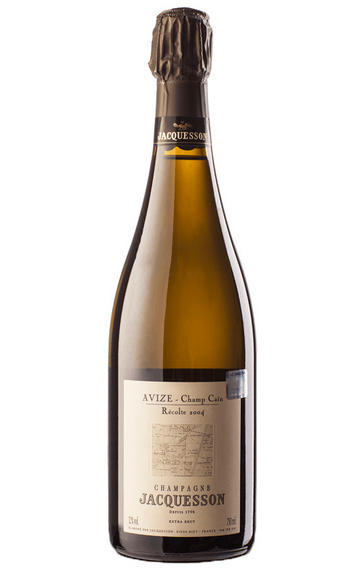
2004 Champagne Jacquesson, Champ Caïn, Avize, Extra Brut
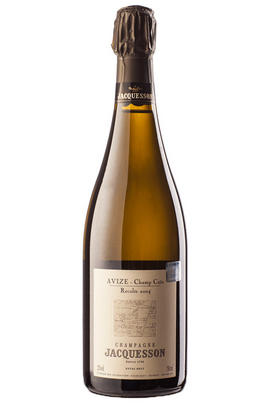
Critics reviews
David Schildknecht - 30/11/2013
About this WINE
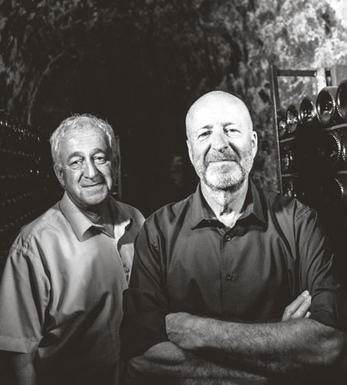
Jacquesson
Voted the third best of all Champagne Houses (after Bollinger and Krug) in 2005 La Revue Des Vins De France, Jacquesson has really come of age.
Based in the evocatively named town of Dizy, just to the north of Epernay, the House is run by the Chiquet brothers (cousins of our own Gaston Chiquet). The brothers are long-term advocates of the modish philosophy of zero dosage: this is put to the test in extremis with the equally modish move to release late disgorged cuvées: the juxtaposition of minimal sugar and extended lees ageing has produced these, some of the purest and most poised of all Champagnes, showing at their very best in magnum of course!
The house philosophy of releasing a clearly categorised Brut NV persists therefore, somewhat at odds with the historical precedent in the region which deliberately declines specifically to equate a batch with a certain vintage. Jacquesson's policy of so doing, albeit tangentially, is both a reflection of their adherence to the values of terroir and vintage diversity and a self-belief which over-rides any of the specific anxieties felt by the Champenois in relation to the conditions at a specific harvest.
These are very serious Champagnes with an emphasis on minerality and complexity of fruit. The wines have significant gravitas, are good food companions and age beautifully.
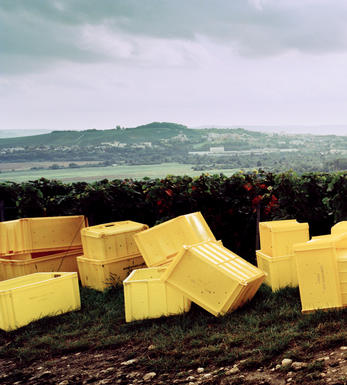
Brut Champagne
Brut denotes a dry style of Champagne (less than 15 grams per litre). Most Champagne is non-vintage, produced from a blend from different years. The non-vintage blend is always based predominately on wines made from the current harvest, enriched with aged wines (their proportion and age varies by brand) from earlier harvests, which impart an additional level of complexity to the end wine. Champagnes from a single vintage are labelled with the year reference and with the description Millésimé.
Non-vintage Champagnes can improve with short-term ageing (typically two to three years), while vintages can develop over much longer periods (five to 30 years). The most exquisite and often top-priced expression of a house’s style is referred to as Prestige Cuvée. Famous examples include Louis Roederer's Cristal, Moët & Chandon's Dom Pérignon, and Pol Roger's Cuvée Sir Winston Churchill.
Recommended Producers : Krug, Billecart Salmon, Pol Roger, Bollinger, Salon, Gosset, Pierre Péters, Ruinart
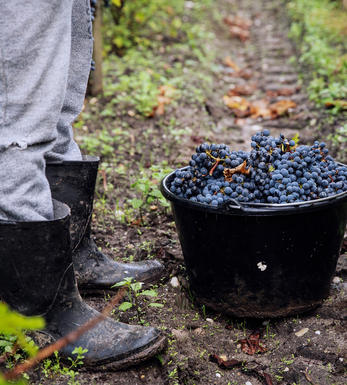
Champagne blend
Which grapes are included in the blend, and their proportion, is one of the key factors determining the style of most Champagnes. Three grapes are used - Pinot Noir, Chardonnay and Pinot Meunier.
26% of vineyards in Champagne are planted with Chardonnay and it performs best on the Côtes des Blancs and on the chalk slopes south of Epernay. It is relatively simple to grow, although it buds early and thus is susceptible to spring frosts. It produces lighter, fresher wines than those from Burgundy and gives finesse, fruit and elegance to the final blend. It is the sole grape in Blancs de Blancs, which are some of the richest long-lived Champagnes produced.
Pinot Noir accounts for nearly 40% of the plantings in Champagne and lies at the heart of most blends - it gives Champagne its body, structure, strength and grip. It is planted across Champagne and particularly so in the southern Aube district.
The final component is Pinot Meunier and this constitutes nearly 35% of the plantings. Its durability and resistance to spring frosts make the Marne Valley, a notorious frost pocket, its natural home. It ripens well in poor years and produces a soft, fruity style of wine that is ideal for blending with the more assertive flavours of Pinot Noir. Producers allege that Pinot Meunier lacks ageing potential, but this does not deter Krug from including around 15% of it in their final blends.


Buying options
Add to wishlist
Description
From vines planted in 1962, the single-vineyard Jacquesson 2004 Extra Brut Avize Champ Cain leads with an utterly remarkable nose. A greenhouse-like profusion of leafing and flowering things is imposed over sea breeze, with jasmine; musky narcissus; nose-prickling spice as if from some exotic orchid; iodine-tinged toasted shrimp shells; and toasted grain all pungently present and anticipating the elusive complexity delivered on a caressingly polished yet consummately refreshing and almost ethereally delicate palate. Over time, the sense of creaminess and the refinement of bubbles became more evident, along with a contrasting impression of enhanced piquancy, suggesting hops and lentil sprouts, all in the context of remarkable poise and transparency to nuance. The endlessly fascinating finish remains infectiously juicy and subtly yet mouthwateringly saline. Lucky owners should plan to follow bottles for at least a decade. (And at around 10,000 bottles twice the volume of the corresponding Corne Bautray and four times that of the Vauzelle Terme there is at least a better chance you can get hold of some. Im told, though, that only 118 bottles were allocated for the U.S., at least initially, which gives you an idea how regrettably few will have been shipped here of the other two Jacquesson single-vineyard gems.)
David Schildknecht - 30/11/2013
wine at a glance
Delivery and quality guarantee